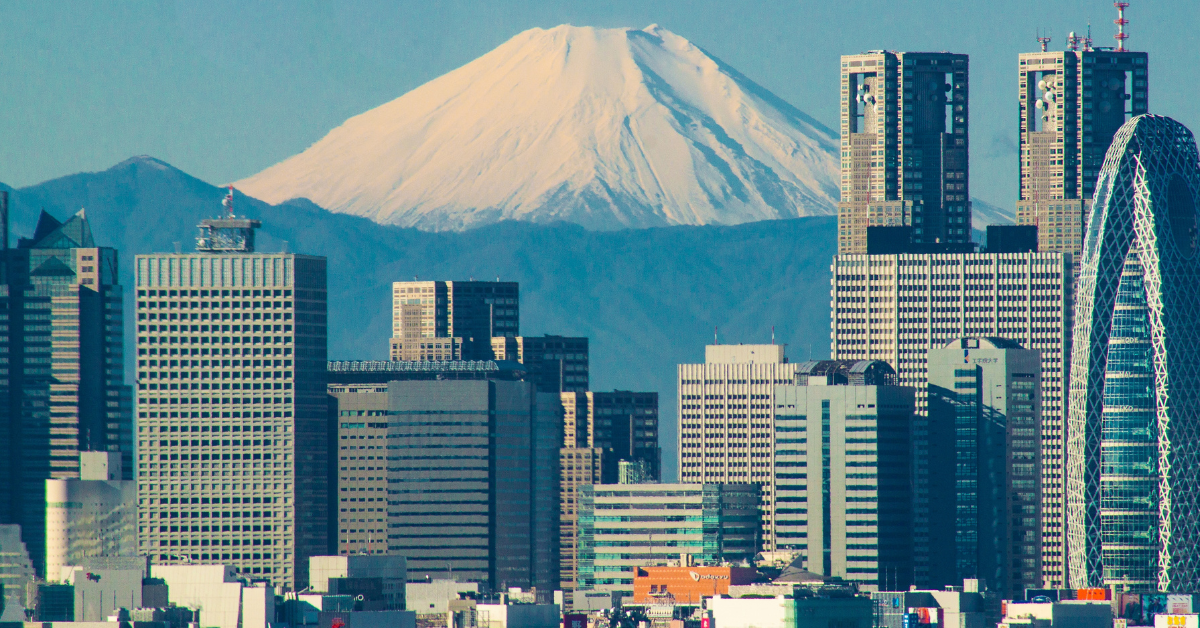Mount Fuji, Japan’s highest peak, has long been a sacred site of worship and a source of artistic inspiration. Since its inscription as a UNESCO World Cultural Heritage site in 2013, the mountain has become a global symbol of Japan’s culture and spirit. For the Japanese, Fuji is not merely a mountain; it is a mirror of their emotions, traditions, and identity.
Why Mount Fuji Became an Object of Worship
Because of its symmetrical shape and sheer scale, Mount Fuji has been revered as a sacred mountain since ancient times. People believed that a deity resided at the summit, making it a central site for Shinto and Shugendō practices. Frequent volcanic eruptions also fueled a deep sense of awe and fear, reinforcing reverence for the mountain.
In the Edo period, the practice of pilgrimage spread among commoners through religious groups called Fujikō. Climbing Mount Fuji became a ritual that symbolized purification and renewal. Even today, many climb the mountain on New Year’s Day to witness the first sunrise, continuing the tradition of spiritual connection.
Table 1 The Role of Mount Fuji in Faith
| Era | Religious Features | Sentiment of Japanese People |
|---|---|---|
| Ancient | Mountain inhabited by deities | Awe and reverence |
| Medieval | Site for ascetic training | Spiritual discipline |
| Edo | Spread of Fujikō | Faith among common people |
| Modern | Fusion of tourism and worship | Symbol of the heart |
Influence on Artistic Creation
Mount Fuji has appeared endlessly in paintings, poetry, and visual arts. Katsushika Hokusai’s series Thirty-Six Views of Mount Fuji is world-famous, especially The Great Wave off Kanagawa, which shows Mount Fuji in the background of powerful waves. This work not only shaped Japanese art but also influenced Western artists.
In literature, many poems and haiku reference Mount Fuji. Poets like Bashō and Buson used it as a symbol of harmony between nature and humanity. In modern times, photography and film have continued to portray the mountain in diverse ways—snow-covered ridges, red-tinted sunsets, or reflections in rice paddies. For Japanese people, Mount Fuji in art represents more than a landscape; it is a symbol of spirit and imagination.
Table 2 Representative Artistic Works Featuring Mount Fuji
| Field | Example Work | Characteristics |
|---|---|---|
| Painting | Thirty-Six Views | Global recognition |
| Poetry | Manyoshu poems | Praise of nature |
| Haiku | Works by Bashō and Buson | Expression of spirituality |
| Photography | Modern photographers | Seasonal beauty |
Japanese Sentiments and Emotional Connection
For Japanese people, Mount Fuji is more than just a mountain. Simply seeing it from afar in daily life can inspire comfort and pride. The fact that it is Japan’s tallest peak strengthens its symbolic importance. Its changing appearance—different in each season and at each time of day—encourages reflection on life and the cycles of nature.
Mount Fuji often appears at major life events, such as weddings or New Year celebrations, symbolizing happiness and prosperity. Its presence in art, rituals, and daily conversation reflects its status as an enduring national icon.
Table 3 Japanese Impressions of Mount Fuji
| Emotion | Typical Context |
|---|---|
| Pride | Being the highest mountain |
| Peace | Everyday view in daily life |
| Awe | Memory of natural disasters |
| Happiness | Weddings and New Year |
Mount Fuji’s Appeal to Foreign Visitors
Foreign travelers are not only drawn to the mountain’s beauty but are also impressed by its deep cultural connection to Japanese spirituality and art. Popular experiences include climbing to the summit, visiting hot springs around the base, and enjoying panoramic views from the fifth station.
What surprises many visitors is how strongly Japanese people describe Mount Fuji as “calming the heart.” Understanding this emotional tie helps foreigners see the mountain as more than a sightseeing destination—it is a window into the Japanese spirit.
Table 4 Foreign Impressions of Mount Fuji
| Perspective | Common Reactions by Foreign Visitors |
|---|---|
| Natural scenery | One of the most beautiful mountains |
| Cultural value | Fusion of faith and art |
| Travel experience | Climbing, hot springs, landscapes |
| Spiritual insight | A key to understanding the Japanese |
Why UNESCO Recognized Mount Fuji
Mount Fuji was inscribed as a UNESCO World Cultural Heritage site in 2013 because of two main aspects: its natural beauty and its influence on faith and artistic expression. Unlike other heritage mountains that are valued primarily for geology or ecology, Fuji was recognized for its fusion of nature, culture, and human imagination.
This inscription enables people around the world to share the value of Mount Fuji, not just as a natural wonder but as a universal cultural treasure.
Table 5 Key Points for UNESCO Recognition
| Criteria | Details |
|---|---|
| Natural beauty | Seasonal landscapes |
| Religious value | Fujikō practices, shrines |
| Artistic legacy | Ukiyo-e, poetry, literature |
| Universal value | Shared heritage for humanity |
Conclusion
Mount Fuji is at once an object of worship, a source of art, and a symbol of the Japanese spirit. For Japanese people, it embodies pride, peace, and awe; for foreign visitors, it offers a gateway to understanding Japanese culture more deeply.
Its enduring power lies in the fusion of natural beauty and spiritual meaning. Whether seen from afar, climbed at dawn, or admired in a work of art, Mount Fuji continues to inspire people across generations and cultures.






